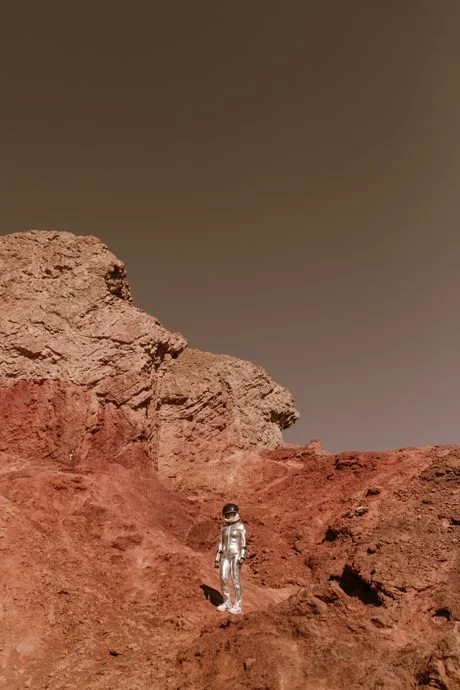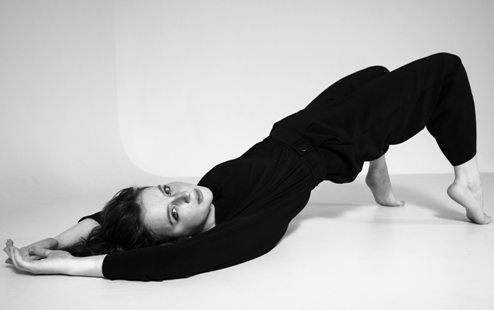swinging sixties style - glasses and gogo boots
Anything was possible in the sixties, after the war freedom and fun was back on the menu and fashion was breaking all the rules. Biba, beatniks, mod culture and the micro miniskirt - the 60s was an important era for culture, fashion and vintage eyewear as the modern age was born.
60s fashion
Fashion found freedom in the sixties.. graphic colourful prints and monochrome checkerboard, playful peter pan collars paired with white gogo boots - the 60s were all about new and innovative style. Modern fashions became affordable, unlike the couture and women embraced it.
Today we’re wearing vintage prints in a modern silhouette, don a snappy mod suit or keep it classic with a retro shift dress and kitten heels, there’s a sixties style for everyone..
Micro Miniskirts
Cottonbro
Hemlines rose in the sixties, Mary Quant delivered us the micro mini and leg baring became the epitome of 1960s fashion. The miniskirt liberated women allowing much more freedom of movement and they got shorter as the decade went on. The heart of Quant's business was her boutique store Bazaar in Kings Road, Chelsea - she became the brand, wearing her own designs, vibrant and modern complete with her cute Vidal Sassoon bob.
Quant cleverly adapted minimalist styles, her simple shift dresses were often modelled on schoolgirl pinafores and paired with flat shoes. Twiggy modelled micro dresses by the dozen in matching brightly coloured tights.
‘The whole point of fashion is to make fashionable clothes available to everyone’
she said, making her lines affordable for the working woman and her pay cheques. Watch the documentary film Quant to find out more about Mary.
Futuristic 60s space fashion
RODNAE Productions
The 1960s space race was an exciting time and saw young designers creating new out-of-this-world styles. Intergalactic travel and flying cars were happening any day and so moon chic was most definitely a thing.
Andre Courrèges's designs epitomised the space age look, with boundary pushing materials and bold geometric silhouettes made up of space bonnets, dresses and boots made from modern high-tech fabrics in a palette of white and silver metallics.
Paco Rabanne was another designer creating space age fashion. Through the use of plastics he created his signature metallic chainmail dresses, seen more recently reincarnated at Chanel.
At the same time Pierre Cardin was fashioning dresses from white leather and plastic discs. His 1960’s Cosmos collection, included shift mini dresses with cutouts and helmets - it was all essentially wearable art.
To recreate the 60s futuristic look just add metallic eyes with decorative elements, gogo boots, disc earrings and a helmet and stick Barbarella on.. far out.
60s Beatniks
The beatniks came from the 1950s beat movement where iconic figures like Jack Kerouac rebelled against the materialism of post war years and everyone listened to frantic jazz.
Hanging out in jazz bars and listening to spoken word poetry, the anti establishment Beatniks adopted the minimalistic nature and ideology of beat style and created their own aesthetic for anybody who rejected the mainstream in favour of artistic self expression and intellectualism. Music, art, poetry and literature were the order of the day.
Beatnik style was anti-fashion, so while mainstream teenagers were donning clever copies of Christian Dior’s hourglass skirts, beatniks opted for lots of black and streamlined silhouettes.
Cigarette pants and black turtleneck sweaters were the uniform of choice, a timeless, chic staple today, with the addition of black leotards for women to allow even more freedom of movement.
To recreate, and I often do, dress head to toe in simple black silhouette and add beret and horn-rimmed glasses.. goatee optional.
60s mods
Being a Mod, or Modernist, in the 60s was a complete lifestyle choice - it was about the clothes, music and clubs. Once Mods clocked off from work they totally immersed themselves in the Mod culture.
Obsessed with getting the right look - they spent all their wages on smart suits, influenced by French and Italian designs, the order of the day was slim silhouettes, androgynous style button down shirts and skinny trousers or bold pop art geometric prints like Yves Saint Laurent’s Mondrian dresses.
The mods listened to Modern Jazz and R&B, while the London Mods could be seen hanging in Carnaby Street parading their fashions while music from the Kinks blared from boutiques.
They clashed with rival youth group, the Rockers, who preferred leather jackets, motor bikes and rock'n'roll, checkout Quadrophenia to see what went down with Mods and Rockers.
Biba
The iconic Biba store, created by Barbara Hulanicki and husband Stephen, was where the young crowd flocked to Biba to buy mod clothes. Biba's aesthetic was inspired by decadent, bygone styles like Art Nouveau and Art Deco in earthy toned colours.
The 1966 edition of Time magazine announced London as 'The Swinging City' and Biba as ‘the most in shop for gear’. Shopping at Biba was more like an event with a unique atmosphere and aesthetic. The store was filled with ornate Victorian furniture and antiques, dimly lit for dramatic effect and nothing was displayed in the windows, which were completely blacked out.
Biba was the store to be seen in and the label to be seen wearing.
60s ACCESSORIES
The 60s are a total inspiration for vintage beauty. From eyeliner styled in feline flicks to doll-like lashes, the origins of make up we wear today.
What could be better than to accessorise with the perfect iconic 1960s haircut? 60’s hair was bold, sexy and as free-spirited as the attitudes. Vidal Sassoon first gave us the bob and then later in the decade the pixie cut as seen on Twiggy and Mia Farrow. Beehives abounded piled high on heads.
Rebelling against beauty salon culture, beatnik and mods wore their hair long, straight and loose ala the Broadway musical Hair. From Jean Shrimpton’s blow dry, to loose waves and eyelash grazing fringes.
Headscarves, worn with sunnies, were massive in the 60s along with headbands and other hair accessories like decorative jewels and I could write a whole chapter on the beret, as glorious now as they ever were.
60S vintage GLASSES & SUNGLASSES
60s glasses were as fun as the era.. round, oval and oversized glasses shaped from thick acetate, geometric designs and retro metal round glasses favoured by John Lennon. Mirrored and coloured lenses arrived - with fun colour pops and graphic printed frames. 1960s glasses became so much more than a medical device, a bona fide fashion accessory and style statement.
German eyewear companies such as Metzler, Menrad, Rodenstock were producing beautiful quality glasses and sunglasses that were made to last.
British designer Oliver Goldsmith created stand out eyewear for high society throughout the 1960’s. The first eyewear brand to feature in the pages of Vogue, cultural icons were seen in Oliver Goldsmiths designs from rockstars to royalty like Audrey Hepburn, Michael Caine, Grace Kelly and Jackie Onassis. Jackie O was rarely seen without her oversized sunglasses.
As the decade went on, frames got bigger and bolder and Oliver Goldsmiths creations got wilder and more headline grabbing, the perfect examples of sixties modernism, like these examples in the V&A.
Take a peep at our 60s style vintage glasses and sunglasses and swing on..
Jo








